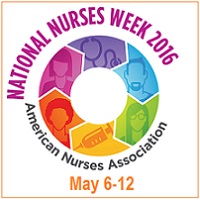 Follow and join the conversation for Nurses Week May 6-12 with #NationalNursesWeek, #NursesWeek and #SafeNursesRock.
Follow and join the conversation for Nurses Week May 6-12 with #NationalNursesWeek, #NursesWeek and #SafeNursesRock.
By Aparna Bala, RN, Clinical Transformation Consultant, AirStrip
Twitter: @AirStripmHealth
Much of how we approach healthcare improvements today is focused on physicians. At first blush, this makes sense since traditionally they are perceived as key decision makers. But, it is important to remember that patient care is delivered by collaborative clinical team – including nurses.
As the American Association of Colleges of Nursing notes, nursing is the nation’s largest health care profession, and registered nurses comprise one of the largest segments of the U.S. workforce as a whole. Additionally, the role of nursing in care delivery is growing at the same time that healthcare is experiencing a nurse shortage. Nurses now juggle several fundamental responsibilities including coordinating care, administering medications, interpreting patient diagnostics information, and directing/supervising care. These individuals care for a caseload of anywhere from 1 to 15 patients during an 8-12 hour shift.
[tweet_box design=”box_09″ float=”none”]#NationalNursesWeek @AirStripmHealth Take nurses into account when investing in new technology @hieanswers[/tweet_box]
Because of their impact on clinical workflow, nurses must be taken into account when health systems consider investing in new technology. For example, physicians collaborate daily with nurses about patients. Implementing disparate communication solutions for these two disciplines is a barrier to efficient workflow and patient care.
As we look to integrate new technologies into the workflow of a hospital, understanding how nurses’ environments and workflows have changed over the last two decades is essential to knowing how and where technology can help, rather than hinder.
- Collaboration vs. Privacy: When I first began practicing nursing in the 1990s, patients were often cared for in a single large room with all the beds lined up. Now that we know more about infection control and want to ensure patient privacy, we’ve shifted to small individualized patient rooms with one or two beds. This helps improve patient satisfaction, cuts down on overstimulation for both patients and nurses, and reduces distractions for nurses. However, this change also reduces the opportunity for collaboration. While nurses could quickly and easily get an extra set of hands or second opinion in a room teeming with colleagues, they are more isolated now and must actively seek help when they need it.
- Learning by Osmosis vs. Personal Experience: The setting changes have affected how nurses learn on the floor. When everyone was in one room, nurses had the opportunity to watch peers deal with a case that they may not have encountered yet. Without the opportunity to see how to deal with it live or to shadow others, nurses now must be more actively invested in their own learning and asking for advice in new situations.
- Calls for Help vs. Mobile Alarms: Nurses are often required to leave the eyeline of their patients, whether getting medication, supplies or admitting another patient. As a result, nurses need to be even more vigilant of alerts and alarms. Beyond just having alarms going off in hallways, mobile alarms that are with the nurse are vital to help them stay aware and provide the best possible care.
With these changes, nurses have had to adapt to the new way of nursing in healthcare and increased demands on their time. But one thing has remained constant: nurses continue to be a key collaborators with physicians, providing the necessary information and context for them to make care decisions. Knowing they play a critical role, it is important that nurses and their workflow and information needs, be taken into consideration when implementing new technology. After all, technology is best suited to solve problems only when the full context of that problem is taken into consideration.
This article was originally published on Mobile Health Matters and is republished here with permission.
